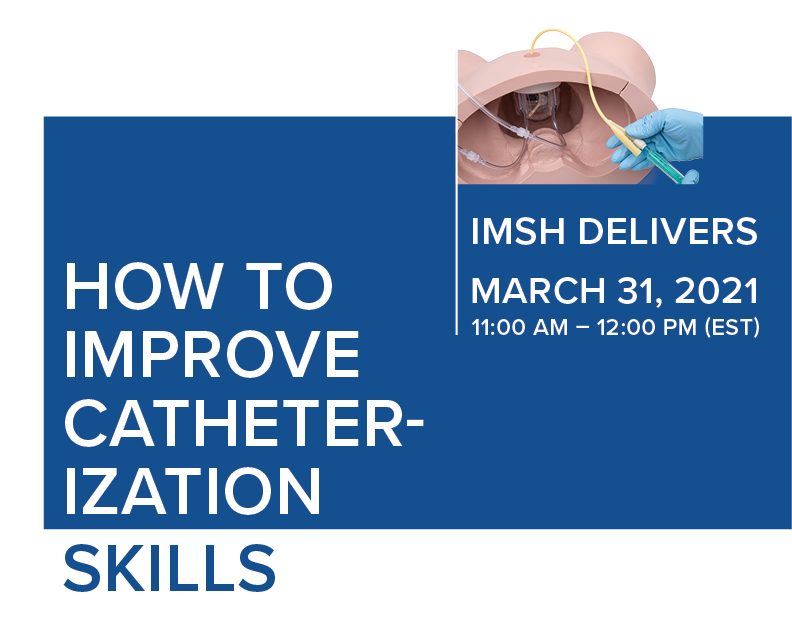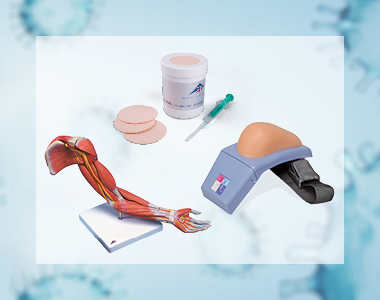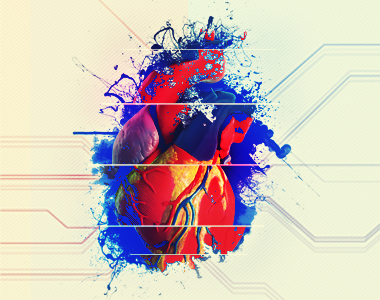Improve Blood Pressure Training in Light of American Heart Month
According to the New England Journal of Medicine, hypertension, or high blood pressure, represents the leading cause of death and disability globally — including stroke, heart failure, chronic kidney disease, and heart disease.
High blood pressure can take years to develop. Usually, it presents asymptomatically, which is how it earned its moniker as a silent killer.
February symbolizes American Heart Month, encouraging Americans to adopt healthy lifestyles to prevent cardiovascular disease. Hypertension signifies one of the most critical risk factors for cardiovascular disease acquired during life.
As healthcare providers, we must appropriately diagnose hypertension early since prevention remains vital. Remember that many people can go undiagnosed with hypertension for many years, as it does not have present symptoms until too late.
Guidelines recommend at least two blood-pressure measurements on at least two different occasions to diagnose essential hypertension. Healthcare providers need to use standardized measurement techniques and validated equipment, including a correctly-sized cuff.
For an accurate reading, patients will need to be seated. With legs uncrossed and feet on the floor, their measurement arm should be supported on a table at heart level after the patients sit quietly for five minutes.
When worn by standardized patients, the Bionic Hybrid Auscultation Simulator (BHS) suit simulates physiological conditions to test diagnostic and blood pressure measurement skills. With its wireless control, the easy-to-use software will respond in real-time to diagnosis and treatment while providing direct feedback to students and educators.
The BHS by Cardionics features an innovative blood pressure simulation at the carotid and radial pulse points, five-wire ECG connections, and earbuds to receive cues from the instructor. The BHS’s blood pressure simulation simulates a manual sphygmomanometer, helping students learn how to obtain reliable blood pressure instruments. With the utilization of the SimScope® stethoscope, students can listen to five Korotkoff phases heard when taking the blood pressure of their future patients.
The BHS can be worn both by standardized patients and by manikins, and instructors can easily adjust the suit scenarios to fit many conditions wirelessly, making it a versatile and valuable tool in clinical education.
References:
1. Abas T, Juma FZ. Benefits of simulation training in medical education. Adv Med Educ Pract. 2016;7:399-400. Published 2016 Jul 18. doi:10.2147/AMEP.S110386
2. Taler SJ. Initial Treatment of Hypertension. New England Journal of Medicine. 2018;378(7):636-644. doi:10.1056/nejmcp1613481
3. Whelton PK, Carey RM, Aronow WS, et al. 2017 ACC/AHA/AAPA/ABC/ACPM/AGS/APhA/ASH/ASPC/NMA/PCNA Guideline for the Prevention, Detection, Evaluation, and Management of High Blood Pressure in Adults: A Report of the American College of Cardiology/American Heart Association Task Force on Clinical Practice Guidelines [published correction appears in Hypertension. 2018 Jun;71(6):e140-e144]. Hypertension. 2018;71(6):e13-e115. doi:10.1161/HYP.0000000000000065
High blood pressure can take years to develop. Usually, it presents asymptomatically, which is how it earned its moniker as a silent killer.
February symbolizes American Heart Month, encouraging Americans to adopt healthy lifestyles to prevent cardiovascular disease. Hypertension signifies one of the most critical risk factors for cardiovascular disease acquired during life.
As healthcare providers, we must appropriately diagnose hypertension early since prevention remains vital. Remember that many people can go undiagnosed with hypertension for many years, as it does not have present symptoms until too late.
How Is Hypertension Diagnosed?
The 2017 ACC–AHA Hypertension Guideline redefined hypertension as a systolic blood pressure of 130 mm Hg or more or a diastolic blood pressure of 80 mm Hg or more and lowered the blood-pressure target to less than 130/80 mm Hg.Guidelines recommend at least two blood-pressure measurements on at least two different occasions to diagnose essential hypertension. Healthcare providers need to use standardized measurement techniques and validated equipment, including a correctly-sized cuff.
For an accurate reading, patients will need to be seated. With legs uncrossed and feet on the floor, their measurement arm should be supported on a table at heart level after the patients sit quietly for five minutes.
Training and Simulation are Key
The utilization of standardized patients has provided clinical students with a hands-on approach to acquire blood pressure skills. Medical simulation in clinical education allows students to apply concepts and gain experience in skills or procedures that would otherwise be difficult without potentially putting patients at risk.When worn by standardized patients, the Bionic Hybrid Auscultation Simulator (BHS) suit simulates physiological conditions to test diagnostic and blood pressure measurement skills. With its wireless control, the easy-to-use software will respond in real-time to diagnosis and treatment while providing direct feedback to students and educators.
The BHS by Cardionics features an innovative blood pressure simulation at the carotid and radial pulse points, five-wire ECG connections, and earbuds to receive cues from the instructor. The BHS’s blood pressure simulation simulates a manual sphygmomanometer, helping students learn how to obtain reliable blood pressure instruments. With the utilization of the SimScope® stethoscope, students can listen to five Korotkoff phases heard when taking the blood pressure of their future patients.
The BHS can be worn both by standardized patients and by manikins, and instructors can easily adjust the suit scenarios to fit many conditions wirelessly, making it a versatile and valuable tool in clinical education.
References:
1. Abas T, Juma FZ. Benefits of simulation training in medical education. Adv Med Educ Pract. 2016;7:399-400. Published 2016 Jul 18. doi:10.2147/AMEP.S110386
2. Taler SJ. Initial Treatment of Hypertension. New England Journal of Medicine. 2018;378(7):636-644. doi:10.1056/nejmcp1613481
3. Whelton PK, Carey RM, Aronow WS, et al. 2017 ACC/AHA/AAPA/ABC/ACPM/AGS/APhA/ASH/ASPC/NMA/PCNA Guideline for the Prevention, Detection, Evaluation, and Management of High Blood Pressure in Adults: A Report of the American College of Cardiology/American Heart Association Task Force on Clinical Practice Guidelines [published correction appears in Hypertension. 2018 Jun;71(6):e140-e144]. Hypertension. 2018;71(6):e13-e115. doi:10.1161/HYP.0000000000000065
더 많은 기사

29. March 2021
How to improve catheterization skills
22. December 2020
The ideal solution to train intramuscular injections

